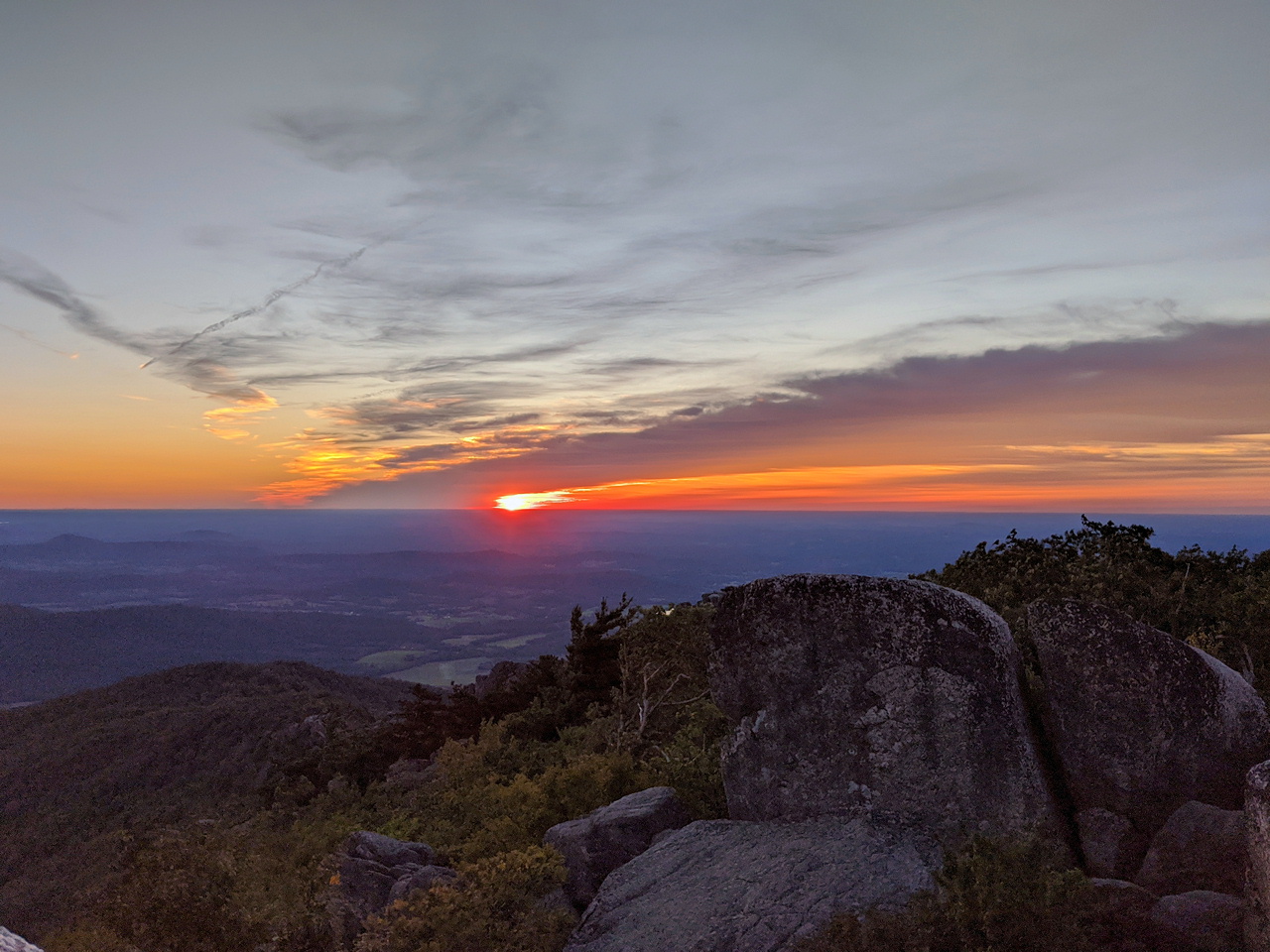As PRR and B&O signaling in the mid-Atlantic has faded over the last decade, the final frontier for interesting signaling has moved to the former Norfolk and Western H-Line running between Roanoke, VA and Hagerstown, MD. Once controlled by the PRR, the N&W adopted a similar position light signal scheme and although many former N&W position lights have been replaced in recent years, the H-Line between Roanoke and Front Royal benefited from a re-signaling effort ~2000 that replaced the interlocking logic without replacing the signals. Combined with that portion of the H-Line seeing modest levels of traffic has seen the N&W PL signals survive into the 2020's. In September 2020 was in Shenandoah National Park to catch the sunrise from the top of Old Rag and was able to schedule the nearby WARREN, BENTONVILLE and FRONT ROYAL interlockings for documentation. In addition to the signals I also caught a surprising amount of NS freight traffic. You can find the full set of photos here ( mirror ).
No sooner had I reached my first stop at WARREN interlocking just south of Front Royal, VA than I was treated to a southbound manifest freight led by NS AC44C6M #4106, C40-10W #7523 and AC44C6M #4016. Norfolk Sothern's main north-south artery follows the former Reading Lurgan Branch from Harrisburg and Hagerstown before entering onto the N&W H-Line. 60 miles south of Hagerstown in Front Royal, traffic headed to The South from New York City, transfers to the former Southern B-Line that joins with the former Southern Main Line at Manassas, VA. This roundabout route was made possible by the Conrail breakup that gave NS access to the northeast markets. Before 1999 this traffic would have been handed off to CSX or Conrail in Alexandria, VA.
The N&W H-Line is configured as a single track line with single block passing sidings. Each siding is controlled by a pair of interlockings and most of those retain their N&W position lights. N&W uses a form of weak route signaling so this mast signal coming off the single track has a single lower head that can display a yellow / indication for - - over / Diverging Approach or - - over flashing / for Diverging Approach Diverging.
At BENTONVILLE, I arrived just in time to catch a monster PSR special intermodal train led by AC's44C6M #5345, #4131 and #4122 along with C44-9W's #9416 and #9613.
This train took over 5 minutes to pass at the 40mph track speed and in addition to the 5 engines on point it had another two units, C44-10W #7702 and ES44AC #8078, mid-train as distributed power.
At some point I started filming and even neglecting the first minute or two of passage you can see the scope of this movement.
H-Line signals onto the single track segments are mounted on bracket masts with the siding signals on short sub masts to better differentiate them. After the passage of the northbound PSR special I figured that would be it in terms of train action, but a main track Approach indication on BENTONVILLE's northbound bracket said otherwise.
Creeping around the bend was a northbound intermodal train following the first with a much more reasonable cut of cars. Power consisted of ES44AC #8055, AC44C6M #4372, fresh off its re-build, and C44-9W #9166.
This cut of containers was much shorter and had no distributed power. I have encountered multiple examples of NS running a short intermodal train after a long train along this corridor.
At Front Royal, VS the 1950's vintage N&W train station was still in use as an NS maintenance base.
NS C44-9W #9630 was parked on the loading track along with a covered hopper.
FRONT ROYAL interlocking has the northnmost N&W PL on the H-Line as everything north of there was re-signaled in the 2014 timeframe due to PTC requirements. A new cantilever mast was installed for northbound trains to support Approach Diverging indications for the new RIVERTON interlocking complex that lets H-Line trains in both directions to directly access the B-Line.
The N&W PL system originally used all amber lamps like the PRR, but in the 1950's it converted to a partly colorized system with green | and red - - lamps on the upper head and yellow lamps in all other positions except the central lamp on the lower head which served as a red marker on absolute signals. In addition, although N&W used Union Switch and Signal as its supplier, different lens and lamp assembly hardware were employed.
I'll close out with this sunrise photo from the summit of the 3284 foot Old Rag.

Next week we'll save some money on a pair of Acela Express trips.




















No comments:
Post a Comment